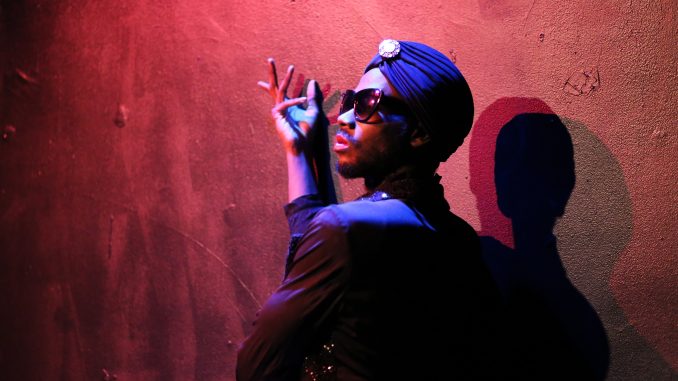
When Temple professor Lee Richardson directed “The Colored Museum” in 1986, he said the show “pushed people’s buttons.”
Richardson said that satire, when done right, can have a powerful outcome.
“Good satire stings,” Richardson said. “Good satire challenges political systems, social, cultural norms. It makes you investigate. It’s needed. That’s what good theater does, it provokes. It challenges the norms.”
When Richardson first put on the show, he said he was hoping for the reaction he received in New York during previews.
“People weren’t really responding,” Richardson said. “People were reluctant to laugh at it. This is a country where race has always been such a delicate, sensitive issue that you’re not supposed to make fun, and you’re certainly not supposed to hang out your dirty laundry.”
“The Colored Museum,” which returned to the stage for Temple Theater Sidestage’s newest production, was directed and produced by Kemar Jewel. Temple Theater Sidestage Season aims to give more opportunities to students interested in theater. The show was not part of the university’s mainstage productions.
The play had an all-black cast, which both Jewel and the performers agreed was a distinguishable feature of the production.
On passing the director’s torch to Jewel, Richardson said that a fresh perspective will give the play the push it needs to become a classic.
“If it’s going to become a classic then it needs to be re-envisioned for its time,” Richardson said. “It would only stifle the creativity if I said, ‘This is the way it needs to be done.’… If theater is not relevant, what is it? If the theater is going to have an audience in the future, it has to acknowledge that.”
Jewel said that even though the play has been performed in the past, it has something new and refreshing to offer contemporary audiences.
“Even today, there is still this oppression in various forms,” Jewel said. “I feel that every scene has something to take away.”
The play begins with flight attendant “Miss Pat,” portrayed by Victoria Goins. Goins said her character as the “white black girl,” is the “very opposite from that ‘black’ stereotype in society.”
“The Colored Museum” gives a satirical perspective to the controversial history behind racial stereotypes in the black community and satirizes shows like “Raisin in the Sun,” and “For Colored Girls.”
Darryl Gene Daughtry Jr., who portrays the character of “Miss Roj,” described it as “a play that encapsulates all the facets of black culture.”
“It talks about the struggle of a man who doesn’t identify as a certain gender, like a drag queen, or a person in the army,” Daughtry said. “It is supposed to be a museum exhibit of every different type of black person and the differences between us.”
Daughtry said the play is still relevant because it references modern day colorism within the black community.
“Today, we have ‘team lightskin’ and ‘team darkskin,’ like I have to choose my truth,” he said. “Here we’re saying you don’t have to choose your truth, because it is all your truth.”
Jewel made minor changes to the content of the play, such as the names of celebrity references, so the allusions would be applicable to modern pop culture. Other than these minor details that conflict with time relevancy, the majority of the play’s content is consistent with the original 1986 production.
The play wraps up with a monologue from “Topsy Washington,” portrayed by Imani Rothwell, who discusses the need for a balance between the past and the present, and how the past is still essentially a part of one’s character.
“Hunny, don’t waste your time trying to label or define me … cause I’m not what I was 10 years ago or ten minutes ago,” Rothwell said in her monologue. “I’m all of that and then some. And whereas I can’t live inside yesterday’s pain, I can’t live without it.”
“When I heard Kendrick Lamar’s album ‘Untitled,’ he said, ‘We don’t die, we multiply.’ And that’s when I realized, that’s what my character Topsy is saying,” Rothwell said. “She presents all of these dead legends, but she’s saying they’re not dead. We don’t die. No matter what they say, we’re still living.”
Nydja Hood can be reached at nydja.hood@temple.edu.



Be the first to comment